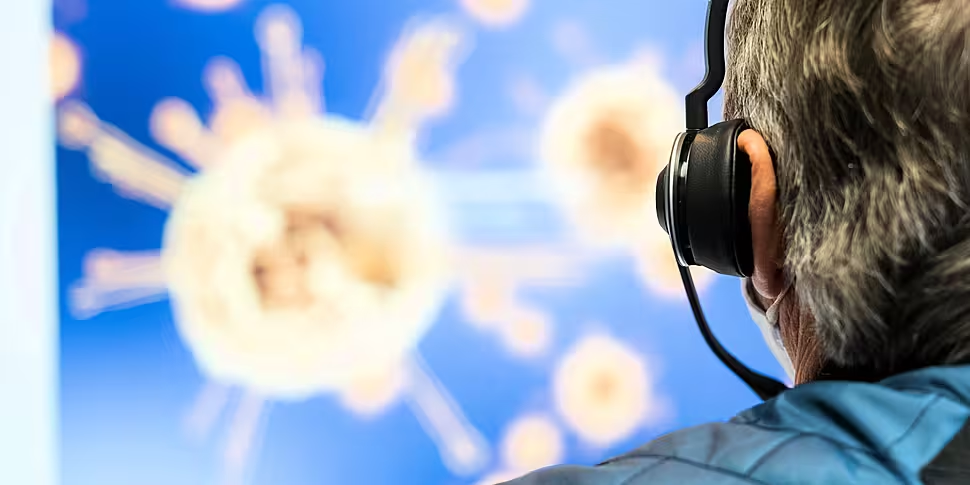A contact tracer with the Health Service Executive (HSE) says the system has made 'so much progress' since Christmas.
Colm O'Reilly graduated from University College Cork (UCC) with a degree in public health last summer.
He told Lunchtime Live the HSE actually contacted college lecturers looking for public health graduates.
"They got in contact with us and we started the application process - and I'd say I was probably fully trained up by the end of September."
Colm said the training was "quite intensive" and involved two weeks of online training with scripts and scenarios, before moving to on-site learning with the COVID tracker system.
"It can be quite overwhelming.... cause you just get so much information thrown at you, but once you start doing the calls we all kind of came up to speed quite quickly".
The average day
"We're open 12 hours a day from 8 to 8, seven days a week - so our days can be quite long.
"But we actually have a great atmosphere there, everyone puts their head down and just gets through the calls.
"On a really busy day, we get between 30 and 50 calls done per contact tracer... we have a great atmosphere there, everyone's pulling in the same direction".
He said things have been getting better since the New Year.
"In the last few weeks we've really made so much progress, and we're actually dealing with things as they come in now.
"Straight after Christmas we obviously had a bit of a backlog, and in the early weeks of January, but right now we've kind of cleared that backlog and we're dealing with things as it's coming in.
"So we're on top of things in that regard".
And he added that they have seen a big drop in the number of close contacts.
"The average number of contacts post-Christmas was probably... over seven people - each positive case had at least seven close contacts.
"The latest number I had, I think it was an average of 1.7 close contacts per positive case as of right now, which is a fantastic improvement".
Three types of calls
He explained that the tracers actually make three different types of calls in the process.
"Call one is where we're ringing someone to inform them that they tested positive for COVID-19.
"During this call we do a quick clinical assessment and we give them the public health advice in regards to their self-isolation period".
"And then we do call twos - call twos are when we're following up from the first call, and we are ringing the positive case to collect their close contacts".
This can include details like household contacts and people they have been in contact with through work or social contacts.
While the final call "is when we're following up on that call, and we ring the close contacts that were identified during call two to remind them that they need to restrict their movements for 14 days from the last date of contact".
The first call is usually made by someone with a clinical background, and as Colm explained there are several of them.
"In our contact tracing centre in Cork we have a huge number of clinicians, retired and current - so that can be anyone from physios, doctors, OT, nurses".
"During the call two when we are collecting someone's close contacts we kind of prompt them for the information.
"So it really depends on whether or not the person is symptomatic - if the person is symptomatic, we look 48 hours back from the first day of the symptoms to collect their close contacts.
"If someone isn't symptomatic, we look 24 hours from their date of positive test to collect their close contacts."
Listing close contacts
Asked what happens when someone is unsure of the date of symptoms, Colm said it can get tricky.
"That is the really difficult thing about this virus - the symptoms are so common... but we just try to have a conversation, we work through everything."
"So really it's just something that you work out with the person you're on the phone to... and we try to narrow it down to a date: that can be difficult sometimes but generally people are very cooperative".
A close contact is defined as anyone you have been in contact with for more than 15 minutes within a two metre radius.
Colm suggested that people should 'err on the side of caution' when listing them, including people they go for walks with.
"We can really only go off the information that they're giving us - personally I would err on the side of caution and list them as close contacts.
"You never know, especially if you're walking with someone for quite a while".
And Colm said people not answering their phones can also be an issue.
"We don't know if they're ignoring it outright, we can't tell that, but I would really like to encourage everyone to answer their phones.
"A lot of people do have reservations about answering [calls] from an unknown number, but in these scenarios a lot of the time it probably is us".









